
But that title, ‘The Dismemberment of Jeanne D’Arc’ appears to be a red herring. The real Jeanne D’Arc was not dismembered, and you can bet that Anish is under no illusions that she was, and he is not one to be flippant with his titles, so there must be some good reason.
Of Jeanne D’Arc we do know that she was burnt on a pyre and her ashes were disposed of in the sea to foil relic hunters. The C-Curve sculpture is located at Chattri, on the spot where funeral pyres burned the bodies of Sikh and Hindu fatalities of world war one, whose ashes were then disposed of at sea. (Muslim fatalities were sent to Woking for burial)
The source of these bodies was the makeshift hospital for Indian war wounded set up in the pavilion complex, the site of the Sky Mirror sculpture.
The surviving Indian soldiers migrated in large numbers to the slums that once stood on the present site of the Jeanne D’Arc installation. They went there for sex, scandalising the town and effectively turning the area into a red light district. Here we seem to have another correlation, Jeanne was most likely raped while imprisoned.
Three of the sites for Anish Kapoor’s sculptures during the festival share key roles in the Indian history of Brighton and through their aspects of sex and death offer a passing analogy with the fate of Jeanne D’Arc.
The Sky Mirror in Pavilion Gardens also has a formal relationship with the hole in the Jeanne D’Arc sculpture, in that the sculpture is a disc of sky brought down to earth, or a view into the heavens. The vagina hole of Jeanne D’Arc is also a projected circle, when you stand between her legs, you see a similarly sized disc that is a view into the ground, the depths exposed, fitting for the bodily theme.

There are four venues that house sculpture by Anish Kapoor during the festival, three are perhaps linked, what of the fourth?
Fabrica is a deconsecrated Methodist church. If there is a connection here with the subject of Jeanne it is not anything to do with the Indian heritage of Brighton. Perhaps it balances the cultural duality of AK himself, but I think it hints at a deeper, less visceral aspect of the Jeanne D’Arc story, one that centres on faith, religious dogma and the nature of questioning.
While Jeanne D’Arc was being tried she was asked whether she was in a state of grace. To answer 'yes' would have been heresy, as only god can know his will. To answer ‘no’ would have proven her guilt. To the amazement of theologians this 19 year old illiterate peasant answered “If I am not, may God put me there; and if I am, may God so keep me.”
What makes this relevant? Anish Kapoor like many artists, is dealing with universal questions and the essence of truth through his work, in fact you could say that all of his work arrives in its vicinity sooner or later. His chosen method of dealing with the ‘big’ subject is to continually contrast absolute simplicity with confusing complexity.
Jeanne illustrates nicely the partisan nature of questioning and how, like sub-atomic particles, question and answer can shift depending on what you wish for. Also like Jeanne, he has a knack for not giving compromising answers to questions where the futility of the answer is already established.
Of course there is a whole load more to it than this ~ and a lot less...
[Remember this is not science]


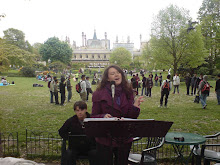
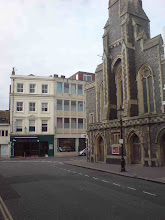
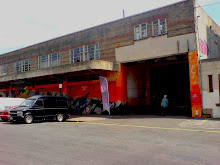
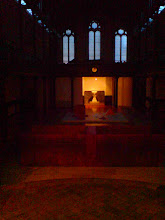










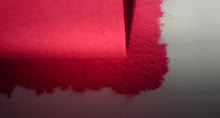
No comments:
Post a Comment